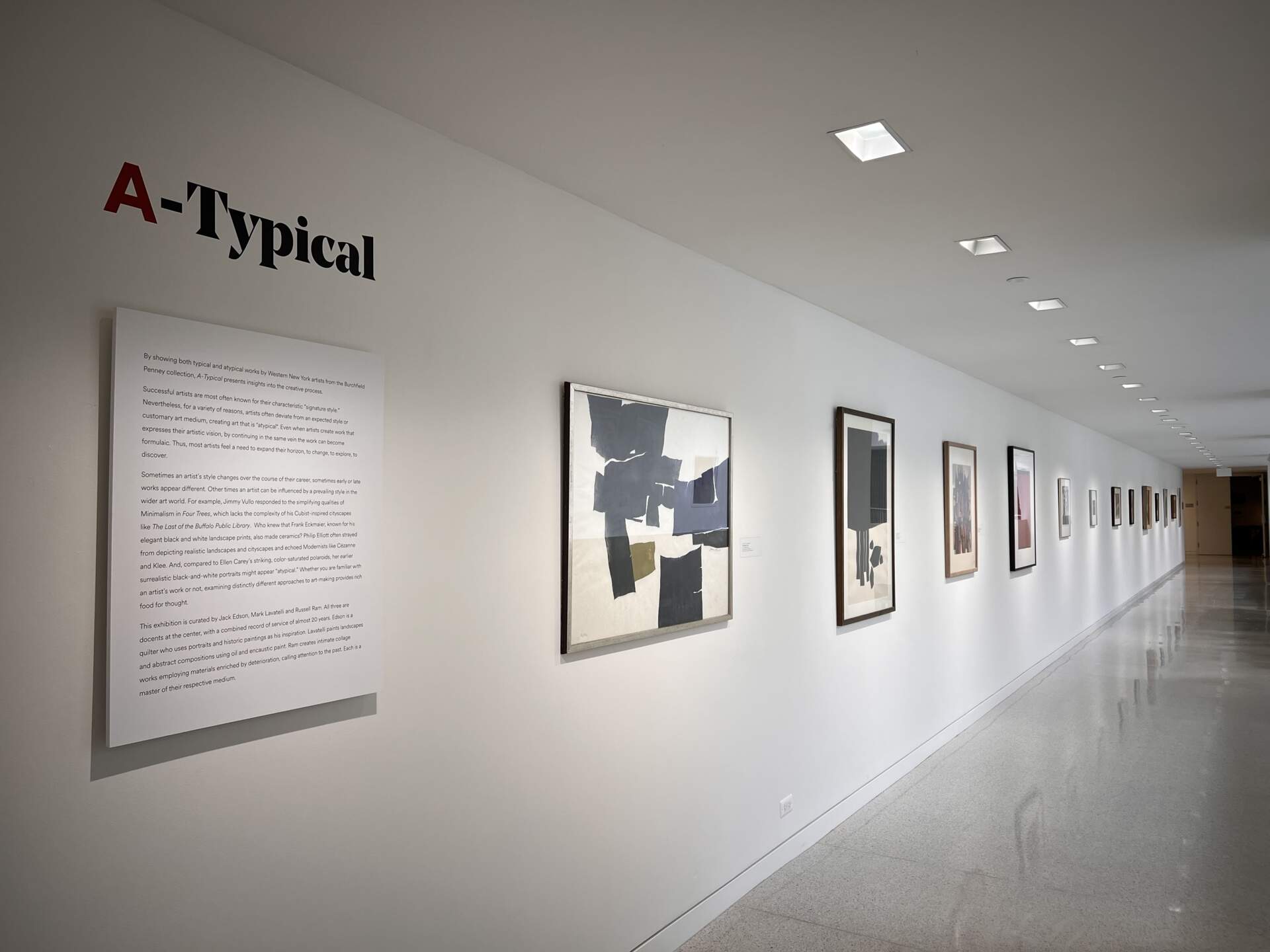
A-Typical
Works from the Collection
On View
Oct 11, 2024 - Feb 1, 2026
By showing both typical and atypical works by Western New York artists from the Burchfield Penney collection, A-Typical presents insights into the creative process.
Successful artists are most often known for their characteristic “signature style.” Nevertheless, for a variety of reasons, artists often deviate from an expected style or customary art medium, creating art that is "atypical". Even when artists create work that expresses their artistic vision, by continuing in the same vein the work can become formulaic. Thus, most artists feel a need to expand their horizon, to change, to explore, to discover.
Sometimes an artist’s style changes over the course of their career, sometimes early or late works appear different. Other times an artist can be influenced by a prevailing style in the wider art world. For example, Jimmy Vullo responded to the simplifying qualities of Minimalism in Four Trees, which lacks the complexity of his Cubist-inspired cityscapes like The Last of the Buffalo Public Library. Who knew that Frank Eckmaier, known for his elegant black and white landscape prints, also made ceramics? Philip Elliott often strayed from depicting realistic landscapes and cityscapes and echoed Modernists like Cézanne and Klee. And, compared to Ellen Carey’s striking, color-saturated polaroids, her earlier surrealistic black-and-white portraits might appear “atypical.” Whether you are familiar with an artist’s work or not, examining distinctly different approaches to art-making provides rich food for thought.
This exhibition is curated by Jack Edson, Mark Lavatelli and Russell Ram. All three are docents at the center, with a combined record of service of almost 20 years. Edson is a quilter who uses portraits and historic paintings as his inspiration. Lavatelli paints landscapes and abstract compositions using oil and encaustic paint. Ram creates intimate collage works employing materials enriched by deterioration, calling attention to the past. Each is a master of their respective medium.